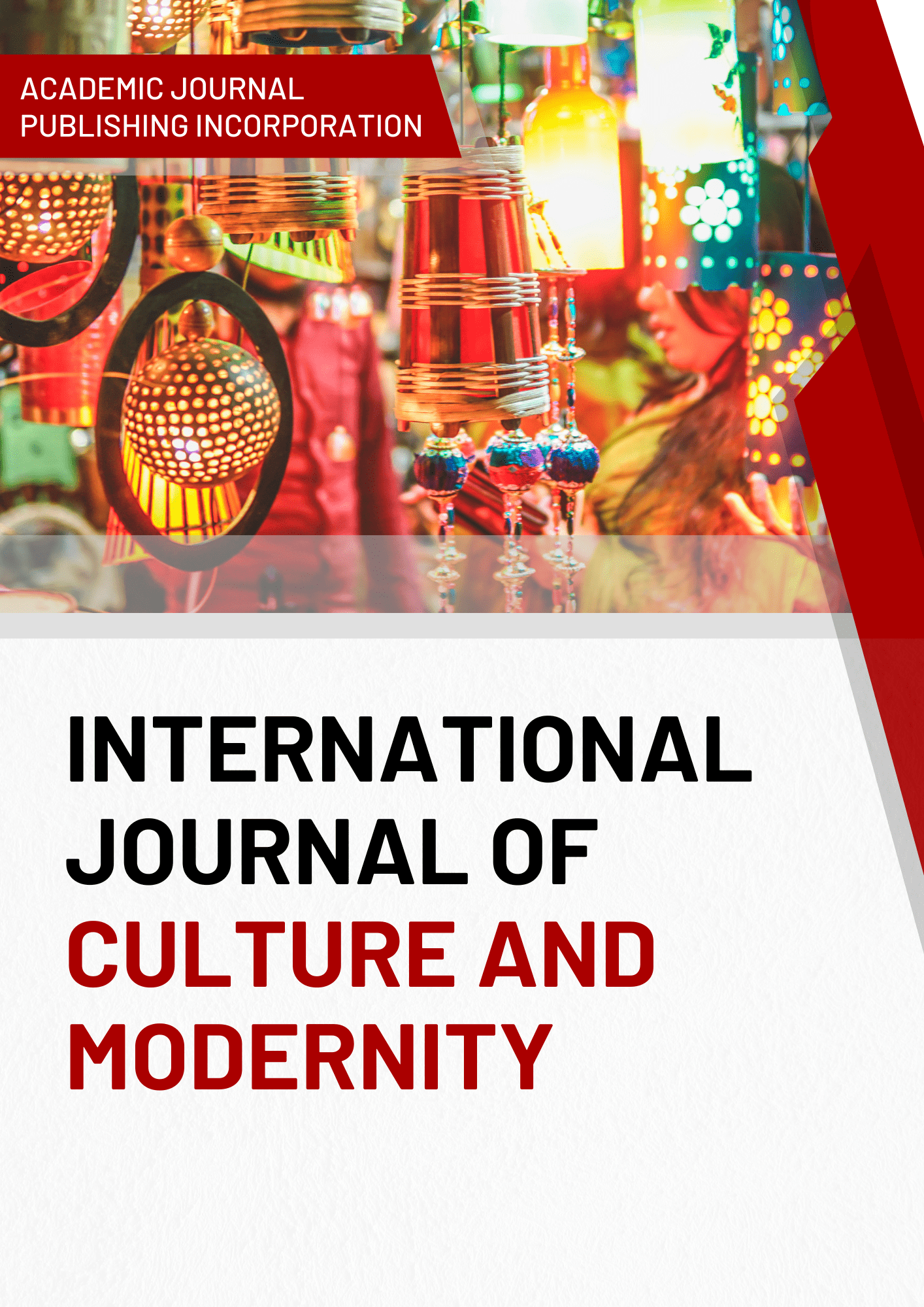The Most Effective Methods for Developing Speaking Skill
DOI:
https://doi.org/10.51699/ijcm.v15i.249Keywords:
reading skills, speaking skills, vocabulary knowledgeAbstract
There is an increasingly high relationship between reading and speaking skills. There is no question that people who develop large reading vocabularies tend to develop large speaking vocabularies. Indeed, reading power relies on continuous improvement in vocabulary knowledge that provides communication. The importance of word knowledge, which facilitates speaking skills, has been a major resource in the development of reading skills. Therefore fostering improvement in word knowledge through wide reading has the potential for fostering improvement in speaking skills. This article focuses on how printed words relate to spoken words and finally how reading contributes to speech.
References
Adams, M. L. (1980). Five coocurring factors in speaking proficiency. In J. R. Firth (Ed.), Measuring spoken language proficiency (pp. 1-6). Washington, DC: Georgetown University Press.
Alderson, J. C. (2000). Assessing Reading. Cambridge: Cambridge University.
Bright, J. A., & G. P. McGregor. (1970). Teaching English as a Second Language. London: Longman.
Brusch, W. (1991). The role of reading in foreign language acquisition: Designing an experimental project. ELT Journal, 45(2), 156-163. http://dx.doi.org/10.1093/elt/45.2.156
Bygate, M. (1991). Speaking. Oxford: Oxford University Press.
Cunningham, A. E., & Stanovich, K. E. (1998). What Reading does for the Mind. American Educator, 8(15). Davies, P., Pearse, E. (2002). Success in English Teaching. Shanghai: Shanghai Foreign Language Education
Press.
Dole, A. J., Sloan, C., & Trathen, W. (1995). Teaching Vocabulary within the Context of Literature. Journal of Reading, 38(6), 452-460.
Dubin, F., & Olshtain, E. (1977). Facilitating Language Learning: A Guidebook for the ESL/EFL Teacher. N.Y: McGrow: Hill International Book Company.
Eskey, D. (2005). Reading in a Second Language. In E. Hinkel (Ed), Handbook of research on second language teaching and learning (pp. 563-580). Mahvah, NJ: Lawrence Erlbaum.
Grabe, W. (1991). Current developments in second language reading research. TESOL Quarterl, 25(3), 375-406. http://dx.doi.org/10.2307/3586977
Grabe, W., & Fredricka S. (2001). Reading for Academic Purposes Guidelines for the ESL/EFL Teacher. In M. Celce-Murcia (Ed.), Teaching English as a second foreign language. Boston: Heinle and Heinle.
Harmer, J. (2001). The Practice of English Language Teaching. Harlow: Pearson Education. Hedge, T. (1985). Using Readers in Language Teaching. London: Macmillan Publishers Ltd. Hedge, T. (2003). Teaching & learning in the language Classroom. UK: OUP.
Higgs, T. V., & Clifford, R. (1982). The push toward communication. In T. V. Higgs (Ed.), Curriculum, competence, and the foreign language teacher (pp. 57-79). Lincolnwood, IL: National Textbook.
Hill, D., & Holden, S. (Eds). (1995). Language Teaching: 1988 Milan Conference Organized by the British Council. London: Modern English Publications.
Hill, W. R. (1979). Secondary School Reading: Process, Program, Procedure. Boston: Allyn and Bacon.
Krashen, S. D., & Terrell, T. D. (1983). The Natural Approach: Language Acquisition in the Classroom. Oxford and San Francisco: Pergamon, Almany.
Krashen, S. D., & Terrell, T. D. (1989). The Natural Approach: Language Acquisition in the Classroom.
Pergamon: Prentice Hall.
Laufer, B. (1997). What is in a World That Makes it Hard to Easy: Some Intralexical Factors That Affect the Learning of Words. In N. Schmitt & M. Maccarthy (Eds.), Vocabulary: Description, Acquisition and Pedagogy. Cambridge: Cambridge University Press.
Lazaraton, A. (2001). Teaching Oral Skills. In M. Celce-Murcia (Ed.), Teaching English as a second foreign language. Boston: Heinle and Heinle.
Lechmann, M. (2007). Is Intentional or Incidental Vocabulary Learning More Effective? Journal of foreign language teaching, 3(1), 23-28.
Lee, W. (1995). Authenticity Revisited: Text Authenticity and Learner Authenticity. ELT Journal, 49(4), 323-328.
http://dx.doi.org/10.1093/elt/49.4.323
Levelt, W. J. M. (1989). Speaking: From intention to articulation. MA: MIT Press.
Levelt, W. J. M. (1993). The architecture of normal spoken language use. In G. Blanken, J. Dittmann, H. Grimm,
J. C. Marshall, & C. W. Wallesch (Eds.), Linguistic disorders and pathologies: An international handbook
(pp. 1-15). Berlin: Walter de Gruyter.
Lewis, M. (1993). The Lexical Approach. London: Language Teaching Publications.
Li, Z., & Song, M. (2007). The Relationship between Traditional English Grammar Teaching and Communicative Language Teaching. US-China Education Review, 4(1).
Little, D., Devitt, S., & D. Singleton. (1989). Learning Foreign Languages from Authentic Texts: Theory and Practice. Dublin: Authentic in Association with CILT.
Mccarthy, F. (2000). Lexical and Grammatical Knowledge in Reading and Listening Comprehension by Foreign Language Learners of Spanish. Applied Language Learning, 2000(11), 323-348.
Nation, I. S. P. (1995-6). Best Practice in Vocabulary Teaching and Learning. EA Journal, 3(2), 7-15. Nunan, D. (2003). Practical English Language Teaching. Boston: McGraw Hill.
Oya, T., Emmanuel M., & Jackie G. (2009). The Influence of Language Contact and Vocabulary Knowledge on the Speaking Performance of Japanese Students of English. The Open Applied Linguistics Journal, 2009(2), 11-21. http://dx.doi.org/10.2174/1874913500902010011
Peacock, M. (1997). The Effect of Authentic Materials on the Motivation of EFL learners. ELT Journal, 51(2), 144-156. http://dx.doi.org/10.1093/elt/51.2.144
Rie, K. (2005). Relationships between Productive Vocabulary Knowledge and Speaking Performance of Japanese Learners of English at the Novice Level. A Dissertation Submitted to the University of Tsukuba in Partial Fulfillment of the Requirements for the Degree of Doctor of Philosophy in Linguistics.
Sanacore, J. (1994). Lifetime Literacy through Independent Reading: The Principal is a Key Player. International Reading Association. Journal of Reading, 37(7), 602-606.
Schmitt, N. (2000). Vocabulary in language teaching. Cambridge University Press.
Ur, P. (1996). A Course in Language Teaching: Practice and Theory. Cambridge: Cambridge University Press. Williams, E. (1984). Reading in the Language Classroom. London: Macmillan Publishers Ltd.
Zhang, Y. (2009). Reading to Speak: Integrating Oral Communication Skills. English Teaching Forum, 2009(1), 32-34. http://dx.doi.org/10.1061/41052(346)25







